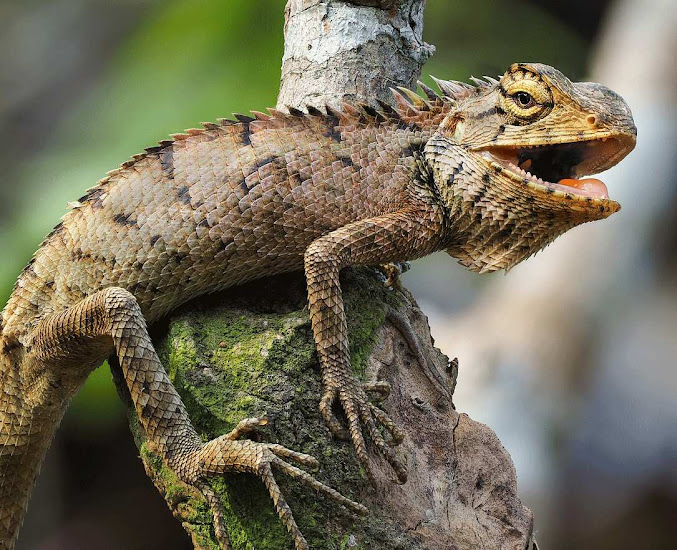Blue Iguana
Actual Depiction
The Fabulous Cayman blue iguana's skin is shadowy blue to dim with cross groups that are frequently scarcely noticeable. Its tinge gives extraordinary disguise among the stones and cleans it occupies. During the mating season, these reptiles become a more splendid blue.
Size
This type of "rock iguana" can surpass 5 feet (1.5 meters) long (nose to tail tip) and can weigh in excess of 25 pounds (11 kilograms). These weighty-bodied reptiles are the Stupendous Cayman's biggest local land vertebrate.
Local Territory
Cayman Island blue iguanas are tracked down just on Terrific Cayman Island. They lean toward dry, rough backwoods in seaside regions, which might contain cacti and other prickly plants. These reptiles may likewise be tracked down in scour forests, semi-deciduous backwoods, and dry-to-subtropical, sodden woodlands. Iguanas are fairly versatile and might be found in man-altered territories, too.
Food/Dietary patterns
These principally herbivorous reptiles eat for the most part leaves and stems, as well as foods, are grown from the ground. They have at times been noticed benefiting from growths, bugs, soil, and feces.
At the Smithsonian Public Zoo, these reptiles eat verdant green vegetables, carrots, yams, and herbivorous reptile pellets.
Generation and Improvement
Amazing Cayman iguanas are physically developed somewhere in the range of 4 and 9 years old. The reproducing season happens from April to June and is by all accounts set off by the beginning of the spring season. After intercourse, the female turns out to be extremely regional and forceful.
She digs a home pit something like 1 foot somewhere down in the sand and lays beneficiary eggs between late June and August. In the wake of keeping up to 20 eggs, she covers them with soil. The eggs brood at a temperature of around 86 to 91 degrees Fahrenheit (30 to 33 degrees Celsius), and the children hatch 60 to 90 days after the fact. The hatchlings are powerless against predation and have a high death rate.
Rest Propensities
These ground-staying reptiles are diurnal, lounging in the sun to heat up toward the beginning of the day. Around evening time, they conceal in rock cleft or caverns, understructures, or heaps of development material.
Life
Blue iguanas have all the earmarks of being an extensive animal category, for the most part making due for 25 to 40 years in nature. One male in human consideration in the U.S. lived to be somewhere around 69 years of age.
Fun Facts
· The Blue iguana is one of the longest-living types of reptiles.
· The nearest family members of the Blue iguana are the Cuban iguana and the Northern Bahamian stone iguana.
· The name "blue iguana" is likewise utilized for radiant blue types of Green iguanas.
· The Blue iguana is among the biggest types of reptiles in the Western Half of the globe.
· Blue iguanas have red eyes adjusted to shield students from the sun's brightness.
· The Blue iguana's eggs are among the biggest laid by any reptile.
· In 2006 the Blue iguana was perhaps of the most imperiled reptile on The planet.


H.png)
b.png)
D.png)
HU.png)
J.png)




